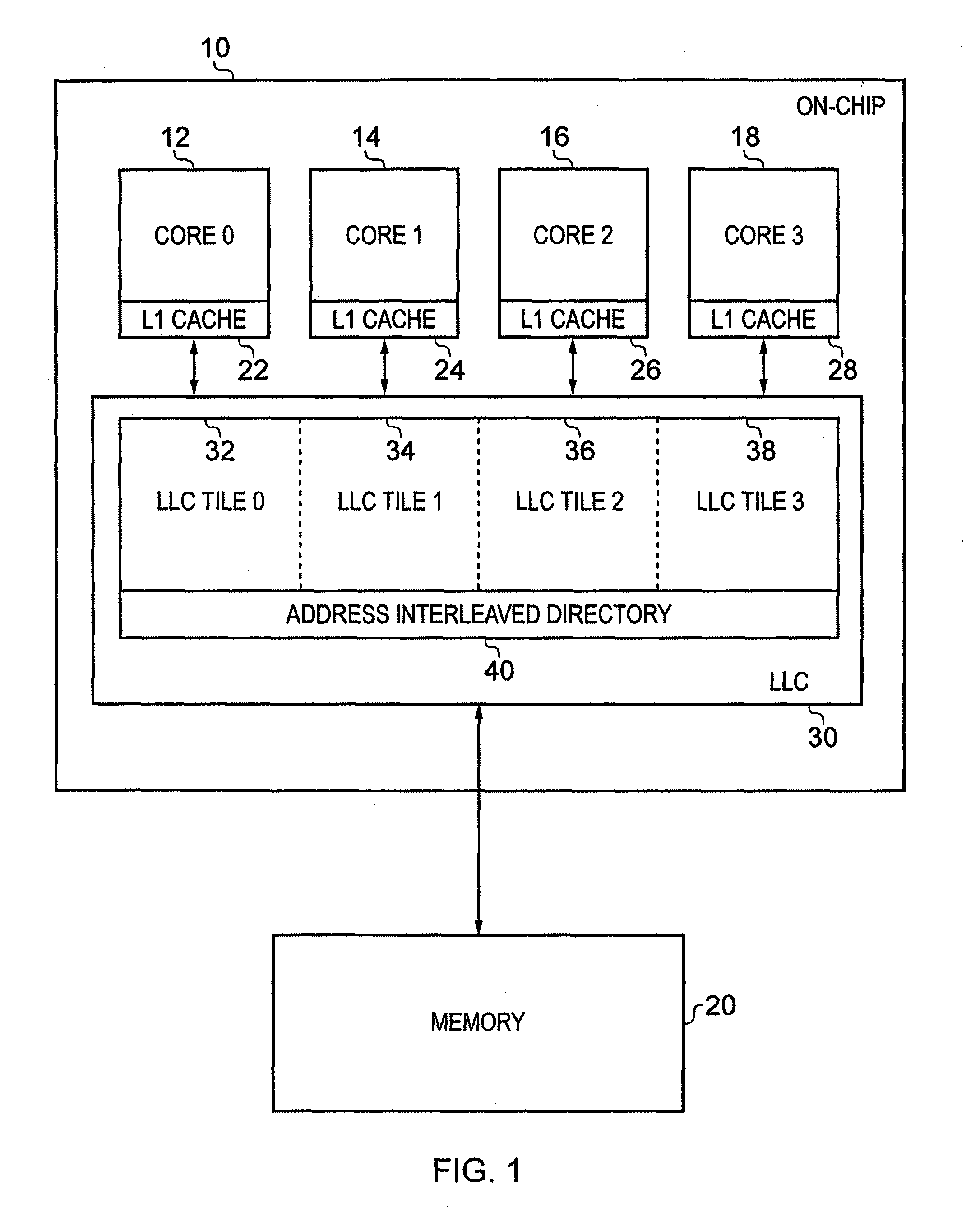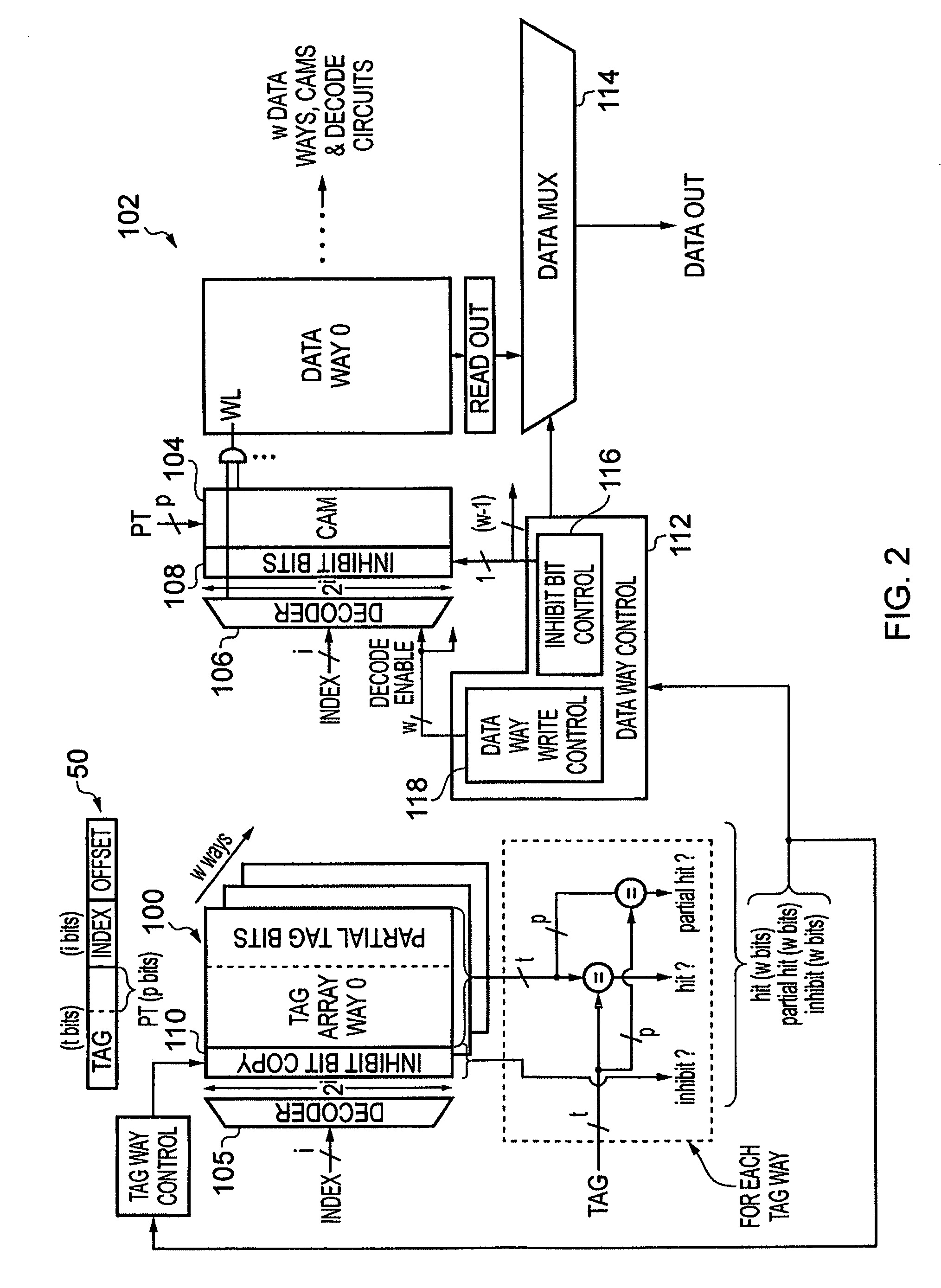Data processing apparatus having a cache configured to perform tag lookup and data access in parallel, and a method of operating the data processing apparatus
a data processing apparatus and cache technology, applied in the field of data processing apparatuses, can solve the problems of high energy consumption, difficulty in predicting the way, and difficulty in achieving accurate prediction techniques, and achieve the effect of less effective predictive techniques in higher level caches
- Summary
- Abstract
- Description
- Claims
- Application Information
AI Technical Summary
Benefits of technology
Problems solved by technology
Method used
Image
Examples
Embodiment Construction
[0081]FIG. 1 schematically illustrates a system-on-chip 10, which comprises four processor cores 12, 14, 16, 18. Each processor core has its own L1 cache 22, 24, 26, 28 respectively. These caches are provided to give the processor cores rapid access to data values originally retrieved from memory 20, such that those data values do not need to be retrieved from memory 20 every time a given processor core wishes to use them. Here it should be understood that the term “data value” may be a data value in the strict sense of the word i.e. a value on which the processor core performs an operation, or may also refer to an instruction. The system-on-chip 10 further comprises a last-level cache (LLC) 30 which is shared between all four processor cores. In this embodiment, the system-on-chip 10 is configured to support server applications and the LLC 30 is a large, highly associative cache configured to cope with the multi-megabyte instruction footprints which the server applications executin...
PUM
 Login to View More
Login to View More Abstract
Description
Claims
Application Information
 Login to View More
Login to View More - R&D
- Intellectual Property
- Life Sciences
- Materials
- Tech Scout
- Unparalleled Data Quality
- Higher Quality Content
- 60% Fewer Hallucinations
Browse by: Latest US Patents, China's latest patents, Technical Efficacy Thesaurus, Application Domain, Technology Topic, Popular Technical Reports.
© 2025 PatSnap. All rights reserved.Legal|Privacy policy|Modern Slavery Act Transparency Statement|Sitemap|About US| Contact US: help@patsnap.com



